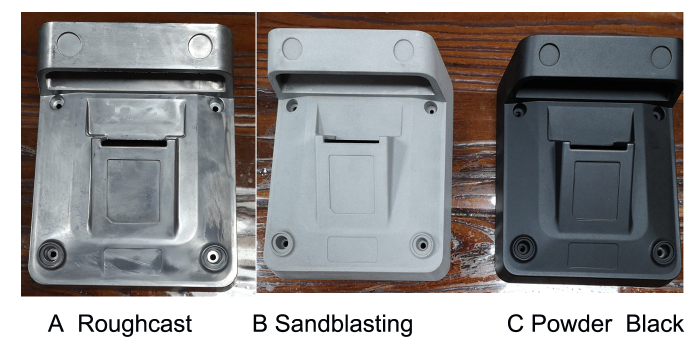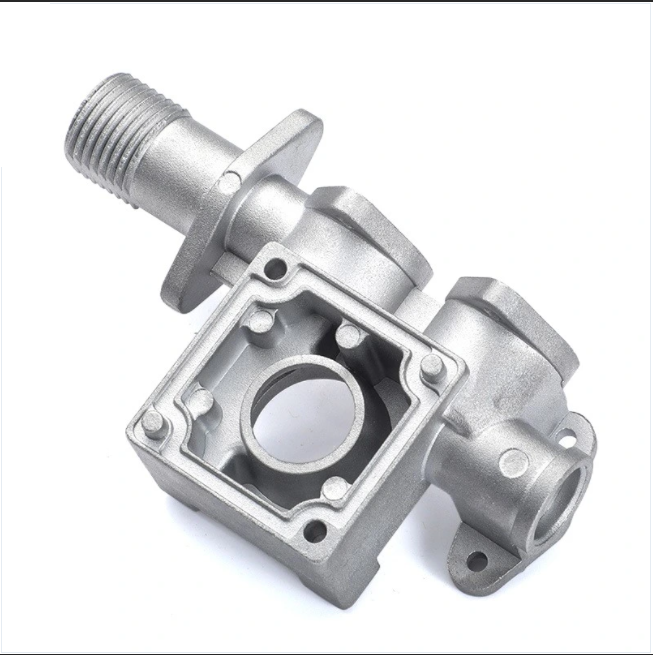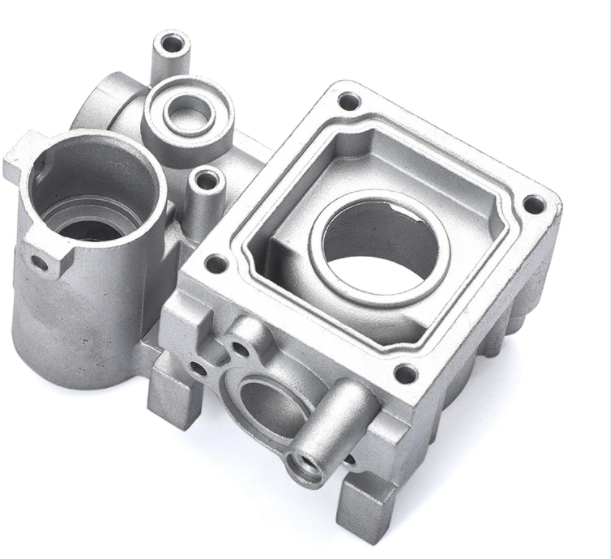The influence of mold on the quality of die casting part
The mold is the main tool for die castings. Therefore, when designing the mold, we should try our best to make the overall structure of the mold and the structure of the mold parts reasonable, easy to manufacture, easy to use, safe and reliable. To make the mold not deformed during die casting, the molten metal flows stably in the mold, the casting can be cooled evenly, and the die casting can be fully automatic without failure. In addition, appropriate mold materials should be reasonably selected according to the production batch and material conditions.
1. The structure of the mold and mold parts should be reasonable
From the point of view of strength, the mold parts are designed to be good as a whole, sturdy and durable, not easy to be damaged or deformed in use. However, if the shape of the die casting is complex and the mold parts are also complex, it will be difficult to process the mold and the machining accuracy is not high. If the mold parts are made into a combined type, the processing is greatly simplified, and it is easy to obtain high machining accuracy, and then high-quality die castings can be obtained.
2. The determination of the number of cavities
To determine the number of cavities, it is necessary to consider the equipment capacity, the difficulty of mold processing, the size of the production batch, and the accuracy requirements of castings. Especially for multi-cavity molds, due to the difficulty of mold processing, large dimensional accuracy errors, and difficulty in achieving a balanced flow channel configuration, the performance of each cavity casting is inconsistent. When the die casting requires high precision and complex geometry, it is necessary to have one mold and one cavity. Small castings are subject to availability.
3. Design of gating system
The gating system is not only a channel for liquid metal to fill the die-casting mold, but also has a regulating effect on the flow rate and pressure transfer of the melt, the exhaust conditions, and the thermal stability of the die-casting mold. Therefore, the design of the gating system must analyze the structural characteristics of the casting, Technical requirements, alloy types and their characteristics, as well as the type and characteristics of the die-casting machine, etc., can be used to design a reasonable gating system.
4. Design of exhaust system
The mold should be provided with overflow grooves and exhaust channels with sufficient overflow range, which is very important to ensure product quality. It is often overlooked that the overflow channel is blocked prematurely by incoming molten metal. It is necessary to adopt a reasonable structure so that the molten metal first flows into the deeper part of the overflow tank to ensure that the exhaust hole is always open for the longest time. In addition, the overflow tank should be provided with ejector rods to remove metal in the overflow tank.
5. Mold temperature
The temperature of the die casting mold is an important factor affecting the quality of the casting. Improper mold temperature not only affects the internal and external quality of die castings (such as defects such as pores, shrinkage holes, porosity, mucous membranes, coarse grains, etc.), but also affects the dimensional accuracy of castings, and even the deformation of castings, causing cracks in the die-casting mold and making the castings. Difficult-to-remove mesh burrs are formed on the surface, which affects the appearance quality of die castings. Taking aluminum alloy as an example, the alloy temperature is poured into the mold at 670-710℃. In long-term production practice, it is concluded that the maximum temperature of the mold should be controlled at 40% of the temperature of the pouring mold. The temperature of the aluminum alloy die-casting mold is 230-280 °C, and the mold temperature within this range is conducive to obtaining high-quality and high-yield castings.
The mold generally does not use gas or electric heating, but adopts preheating and cooling devices. These devices use oil as a medium to preheat and cool the mold as required.
6. The determination of the size of the formed parts
When calculating the size of die-casting parts, the shrinkage rate of the selected die-casting material should be in line with reality, otherwise it will lead to unqualified products. If necessary, the dimensions of the die-casting parts are calculated after the actual measurement through the test mold. For high-precision products, it is even necessary to take into account the thermal expansion of the material of the die-casting parts and the influence of the storage and use environment of the product on the dimensional accuracy of the product after die-casting.
7. The decision of the parting surface position
The position of the parting surface will affect the mold processing, exhaust, product demoulding, etc. Usually, the parting surface will leave a trace line on the product, which affects the surface quality and dimensional accuracy of the product. Therefore, when designing the parting surface position, in addition to taking into account the problems of product demolding, mold processing, exhaust, etc., the parting surface position can be placed in a place where the product surface quality requirements are not high, or the dimensional accuracy is not high.
8. The mold cannot be deformed
Often due to the unreasonable mold structure or improper selection of mold materials, the mold is cracked and deformed during use, resulting in unqualified products. Therefore, when designing the mold, appropriate measures must be taken to ensure the quality of the product.
Usually, during die casting, the pressure inside the mold is 70-100MPa. In order to prevent the mold from being deformed and dislocated, the cavity should be sufficiently thick, and the plate and the backing plate for installing the core should be sufficiently thick. If necessary, a support pad can be added under the backing plate. The core and cavity should be installed reliably, the side roughness of the core and the mounting hole should be appropriate, and the roughness should not be too low. The through-hole core should be fixed on both sides to prevent the product from being thick on one side and thin on the other. For the core of the blind hole on the product, we should also find a way to balance the force of the core from the position of the feed port, the number and the reinforcement of the core.
For the die-casting mold, the strength of the cavity and the backing plate can be checked. Check the strength and stiffness of the cavity wall thickness, and check the stiffness of the backing plate. In addition to taking certain guarantee measures on the mold structure, mold materials with small deformation and good strength must be selected. In addition, there is a gap between the mold guide post and the guide sleeve, or the wear of the guide post and the guide sleeve during use will affect the quality of the product. Especially for products with high dimensional accuracy, in order to ensure product accuracy, the moving and fixed mold cone surface matching parts can be set on the parting surface, or 2-4 positioning rods can be set at appropriate places around the cavity for positioning and reinforcement. , in order to prevent the dislocation of moving and fixed molds, which is more important for large-scale and mass-production molds.
Post time: Mar-08-2022











